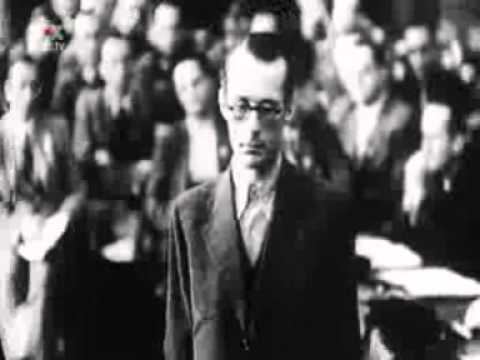Name Ulrich Graf | ||
 | ||
Similar People Roland Freisler, Heinrich Borgmann, Richard von Weizsacker, Horst Buchholz, Gottfried Benn | ||
Ulrich-Wilhelm Graf Schwerin von Schwanenfeld (21 December 1902 – 8 September 1944) was a German landowner, officer, and resistance fighter against the Nazi régime. His name is commonly shortened to Schwerin.
Contents

Biography
Count Schwerin von Schwanenfeld was born in the Danish capital, Copenhagen, the son of the German diplomat Ulrich Graf von Schwerin (1864–1930) and his wife Freda von Bethmann-Hollweg, a cousin of Chancellor Theobald von Bethmann-Hollweg. The Uradel House of Schwerin, named after the Mecklenburg capital, was first documented in the 12th century; the family held large estates in the Brandenburgian Uckermark region and the adjacent lands of Mecklenburg-Strelitz.
Schwerin's family moved to Dresden, when he was twelve years old. He finished school at the convent of Roßleben, Thuringia in 1921 and went to study agronomy at the Technical University of Munich. As a witness of the 1923 Beer Hall Putsch, he found Nazism loathsome to his Christian and social convictions (he was a Knight of Justice in the Protestant Order of Saint John, to which he had been admitted in 1933). Schwerin was graduated at Breslau in 1926 and administered his family's manors in Göhren (today part of Woldegk, Mecklenburg) and Sartowice near Świecie, Pomerelia in Poland. In 1928, he married Marianne Sahm, a daughter of Heinrich Sahm, then president of the Free City of Danzig senate.
Already by 1935 he held the view that Adolf Hitler must be killed to be brought down. Beginning in 1938 ahead of the German occupation of Czechoslovakia, Schwerin belonged to the tightest circle of the resistance along with his personal friends Peter Graf Yorck von Wartenburg and Fritz-Dietlof Graf von der Schulenburg, and later also to the Kreisau Circle. With the beginning of World War II, he was called up to the Wehrmacht as an officer in the staff of Generaloberst Erwin von Witzleben. After Witzleben's dismissal in 1942, Schwerin was transferred to Utrecht until in March 1943, Major General Hans Oster appointed him to the Abwehr office at the Oberkommando der Wehrmacht in Berlin.
Schwerin participated in the failed attempt on Hitler's life and coup d'état on 20 July 1944 from his position at the Bendlerblock, where the plotters' headquarters were, although he had been saying for weeks that the chances for a successful coup were very slight. There, on the night of 21 July 1944, he was arrested, and on 21 August was sentenced to death by the Volksgerichtshof, with Roland Freisler presiding. The recordings of the show trial attest how a doomed Schwerin, ravaged by the conditions of his detention and brought to court without a belt and tie, tried to preserve his dignity. He stated that his opposition to Hitler was due to "the many murders (...) in Germany and abroad". He was infamously constantly interrupted by a furious Freisler, who finally shouted him down in rage.
On 8 September, Schwerin was hanged at Plötzensee Prison in Berlin. He is buried at the Waldfriedhof Dahlem.
